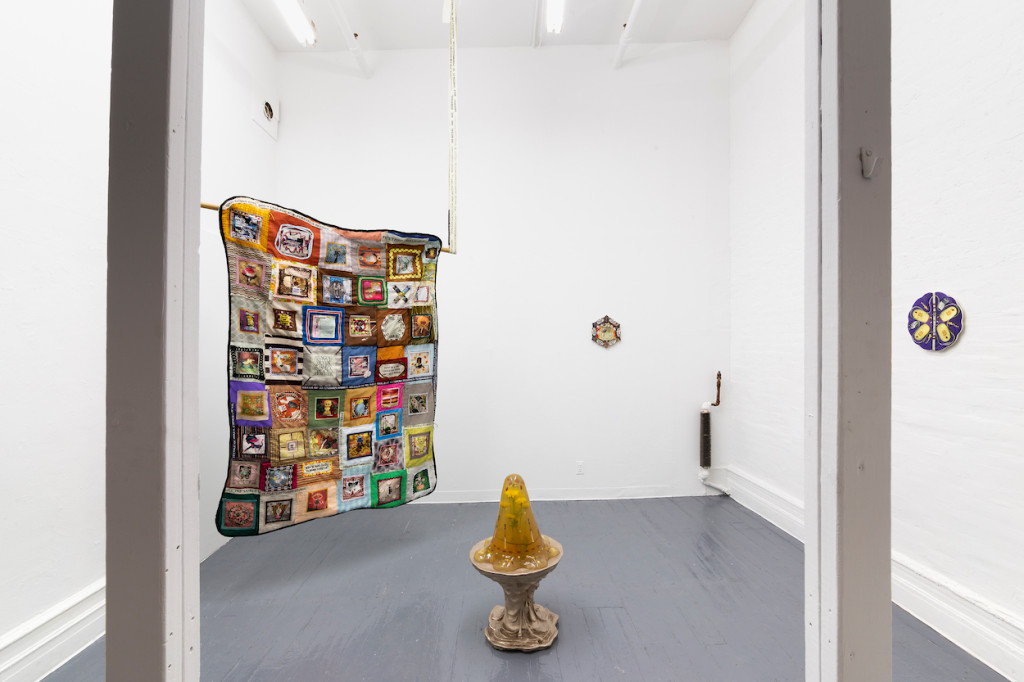[ad_1]
For weeks, the news about the coronavirus has filled artist Ezra Benus with dread. As someone with immunosuppression and chronic illness, the pandemic spread of Covid-19 poses an immense risk to the 26-year-old artist’s health. “It’s a recipe for disaster,” he told ARTnews. “What will happen to me if the medical system gets overwhelmed and I lose access to medications and doctors?”
Artists with chronic illnesses, autoimmune diseases, or respiratory issues are watching the spread of the coronavirus pandemic with concern. The high rate of infection puts many of these artists at extreme risk for contracting the disease; some have been required to enter a medical quarantine, preventing them from accessing their studios or working their daily jobs. And, because of high medical costs, lost income over the next few months could put many of these artists at financial risk.
Sharona Franklin spent months preparing for her solo show at King’s Leap gallery in Tribeca, but the exhibition closed prematurely this week because of the coronavirus. The show, “New Psychedelia of Industrial Healing,” was supposed to shed light on the artist’s experience living with chronic illness and a physical disability. Franklin was also forced to postpone a panel she organized with Printed Matter NYC called “Methodologies of Care,” and she has been forced to undertake similar measures for other planned events because of restrictions on travel for people with chronic illnesses. “When I traveled to install [my exhibition] last month, medical insurance was still in place,” the Vancouver-based artist said. “Now medical insurance for travelers has been revoked.”
A group exhibition called “Rituals” at the Marlene Meyerson Jewish Community Center in Manhattan has also prematurely closed because of the virus. The show—which was curated by Benus and included his work alongside pieces by artists Romily Alice Walden and Yo-Yo Lin—intended to articulate the complexity of living with chronic pain, navigating care systems, and reckoning relationships with oneself and others.
With many of his events canceled through April, Benus says he has lost $2,000 in expected income. He was planning to be able to use that money to supplement the cost of his trips to the hospital for necessary infusion treatments. “Everything is particularly acute for sick and disabled people,” he said.
“Worrying about contracting disease is something we do every day, but the mass hysteria only heightens our anxiety and hopelessness,” said Patty Lu, an artist who has been bedridden for most of the year. “The panic and hoarding from able-bodied fear mongers have shown me that, in times of crisis, people are more worried about themselves than community preservation. That is terrifying in a world where we already feel that desperation daily.”
Online, artists are already banding together to share resources with each other. Benus says that friends have started to send him money, which he has since redistributed to other needy artists who have lost gigs. And on Thursday, artist Shawn Escarciga started a relief fund for his low-income colleagues in New York City with a current fundraising goal of $20,000. Hours after the fundraiser was posted, the GoFundMe page was overwhelmed with applications for aid, demonstrating the need and panic that’s currently pervading the art world. Another relief fund, created by author Ijeoma Oluo for Seattle artists affected by the coronavirus outbreak, has raised more than $93,000 of its $100,000 as of this writing.
Artists have also worked together to create a comprehensive list of resources for freelancers, including access to various emergency grant applications. And although it was not created specifically in response to the current pandemic, the New York Foundation for the Arts (NYFA) and the Rauschenberg Foundation recently announced a new medical emergency grant that will provide artists with up to $5,000 for unforeseen health expenses. (Applications will be reviewed on a rolling basis starting in late May or June of this year.) Other arts organizations, like the Yerba Buena Center for the Arts, say they are also actively working on ways to support artists in the midst of the pandemic.
“A virus could be a deadly situation for many of us. That is why we are pleading that the general public start social distancing to reduce contagion,” said Hayley Cranberry Small, who established the Lutte Collective in 2017 to foster dialogue after noticing a lack of support for artists with disabilities and chronic illnesses. Small (who is related to the author) said that the public could do more to help artists. “It is so easy to support the disabled community, yet time after time we find only the marginalized supporting the marginalized. Now is the time to prop us up. In fact, yesterday was the time, but we’re asking again today.”
Suggestions from disabled and chronically ill artists include offering to buy or cook meals, picking up their medications at the pharmacy, buying their artwork or curating exhibitions about it, and voting for a better health insurance system.
But there is also mounting frustration from sick and disabled people who have previously been denied the ability to work remotely—only to see universities and arts organizations open those opportunities in the face of a pandemic. “We have lost jobs over this,” Benus said. “Suddenly, people are realizing that better hygiene and access to remote work and learning are societal obligations. Until something like the coronavirus affected the general population, these things were presented to disabled people as impossibilities.”
[ad_2]
Source link

